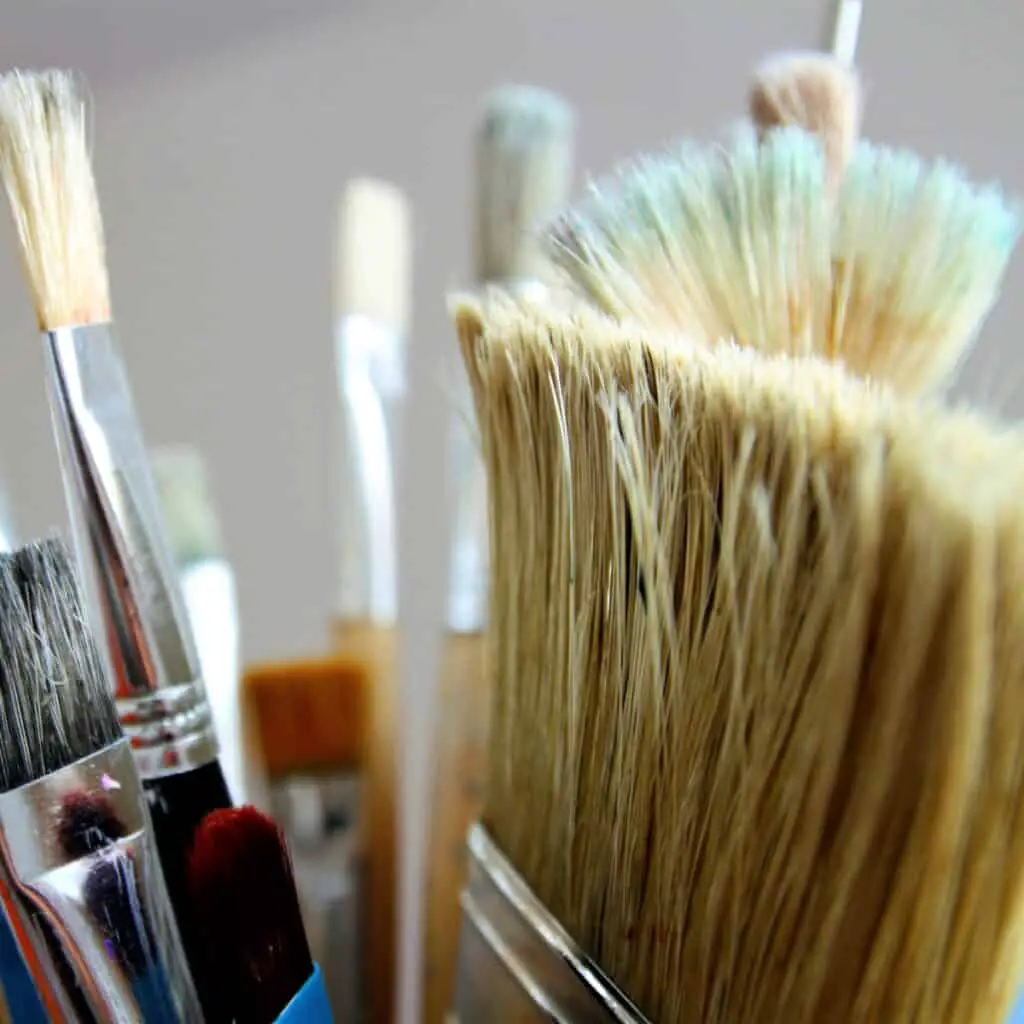Painting is a great hobby, but it can be a real pain if you don’t take care of your brushes. One of the most common problems is split ends.
Let’s look at what causes them and how to prevent them. I’ll also share some useful tips on how to keep your brushes in good shape.

In this post we'll cover:
Why Split Ends on Paint Brushes are a Nightmare
Split ends on paint brushes are a nightmare because they make your brushes bad. When the bristles of your brush start splitting, the brush becomes damaged and unusable. The splitting of the bristles can cause the brush to lose its shape, making it difficult to use.
Split Ends Ruin Your Paint Job
Split ends on paint brushes can ruin your paint job. When the bristles of your brush start splitting, they become frayed and uneven. This can cause the brush to leave streaks and uneven coverage on your painting surface.
Split Ends are a Sign of Poor Brush Care
Split ends on paint brushes are a sign of poor brush care. When you don’t take care of your brushes properly, they can become damaged and start splitting. To avoid split ends on your brushes, it’s important to clean them properly after each use and store them in a dry place.
Split Ends are a Costly Problem
Split ends on paint brushes can be a costly problem. When your brushes start splitting, you’ll need to replace them more frequently, which can be expensive. To avoid this problem, it’s important to take good care of your brushes and invest in high-quality brushes that are less likely to split.
Keeping Your Brushes in Top Shape: Tips to Avoid Split Ends
Split ends on brushes can cause a lot of damage to your work. They can scrape and chop away at the paint, leaving it looking less than perfect. Plus, they can make it difficult to control the amount of paint you’re applying, leading to a less-than-perfect end result. That’s why it’s important to take steps to prevent split ends on your brushes.
Simple Steps to Avoid Split Ends on Your Brushes
Here are some easy steps you can follow to keep your brushes in the best possible state:
- Start by choosing the right brush for the job. Different brushes are designed for different types of work, so make sure you’re using a suitable brush for the task at hand.
- Always clean your brushes thoroughly after each use. Use warm water and a little bit of soap to remove any paint or other debris from the bristles.
- Store your brushes in a dry, cool place. Avoid leaving them outside or in a hot, humid area, as this can cause the bristles to dry out and become brittle.
- Protect your brushes by adding a little bit of water to the bristles before storing them. This can help to keep the bristles soft and supple.
- Help improve the bonds between the bristles by gently combing them with a metal brush. This can help to remove any tangles and keep the bristles in good condition.
- If you notice any split ends on your brushes, remove them gently using a pair of scissors. Be sure to only remove the damaged parts and not to chop away too much of the bristles.
- Follow these steps consistently to ensure that your brushes stay in good condition for as long as possible.
Conclusion
So, there you have it- everything you need to know about split ends on brushes.
They’re not as serious as they look, but you should take care of your brushes properly to avoid them. So, don’t forget to clean your brushes regularly, store them properly, and use them properly, and you’ll be fine.
Plus, you can always use a little bit of hair mask to help them along!
I'm Joost Nusselder, the founder of Tools Doctor, content marketer, and dad. I love trying out new equipment, and together with my team I've been creating in-depth blog articles since 2016 to help loyal readers with tools & crafting tips.
